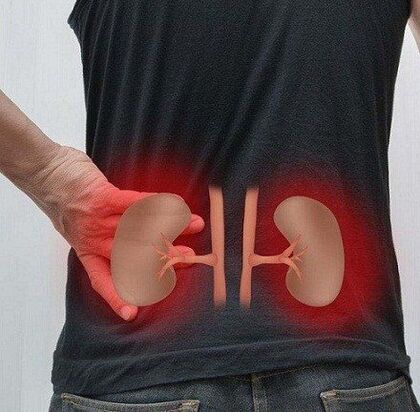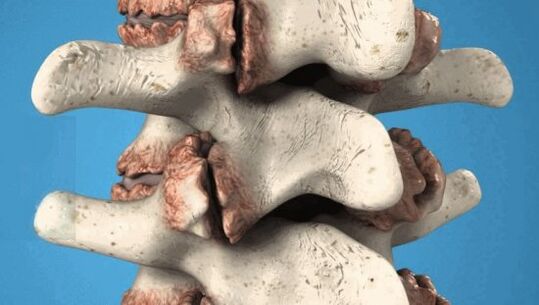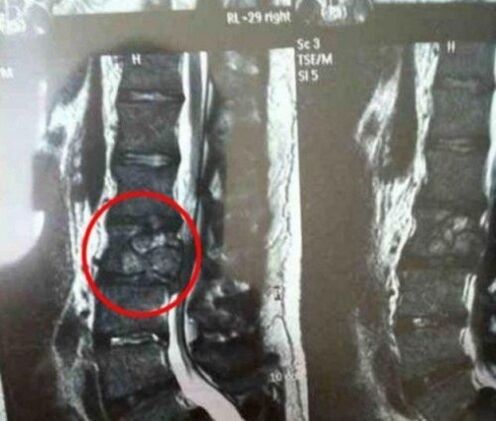
Few people have back pain in their lower back at least once in their lifetime.In this way, we pay for the uprising and our family habits.
In addition to the possible damage to the spine, its muscles, nerves and ligaments, it is also important to remember that sometimes the back of the waist and waist can sometimes be damaged by kidney disease, gastrointestinal tract and female reproductive organs.
Symptoms of lower back pain can range from stupid to sharp.Pain can occur independently or in chronic conditions (symptoms appear for more than three months).
Dangerous!
Send the doctor immediately if:
- After a significant back injury, pain in the waist area appears sharply.
- The temperature rises sharply, there are autonomy disorders, loss of consciousness, sweating, and difficulty breathing;
- Involuntary emptying of the intestine and bladder occurs;
- Numbness is felt in the groin.
- There are weaknesses in the lower limbs, relieve or paralyze, and impaired sensitivity.
- Stomach pain, coughing or sneezing can be greatly exacerbated.
- Symptoms appear in the context of sharp weight, long-term steroid use and immunodeficiency;
- In family history, bone cherry tissue has cancer, inflammatory or degenerative diseases.
Why are the back injured?
Multi-tail pain
Muscle stretching or spasms develop gradually or suddenly.The high load damage is not only affected by muscle fibers, but also by ligaments and fascia.
The following are the occurrence of muscle pain:
- Add weight or excessive burden during work or exercise;
- Exercise from time to time.If you are not active during work week and then spend your clock in the gym on weekends, your muscles are particularly vulnerable;
- My body's weight has increased dramatically and my muscles have no time to grow.
- Sitting or standing in an uncomfortable position for a long time;
- Wear a bag every day in your hands or on your shoulders;
- Cannabis disease.When you don't bend over, the spine best performs its support and protection functions.The muscles in the lower back experience minimal load, when you sit under the lower back with good support and evenly distribute the weight to both legs.
Myositis (inflammatory) in the lower back muscles can be suspected if the back becomes ill after bruising, fracture, stretching, hypothermia, infectious disease, or invasion of installed worms.Due to inflammation of muscle fibers, severe pain continues to occur, and "nodules" will be felt during muscle spasms.Inflammation can be acute or can take a chronic form.Due to the long process of the disease, the pain is unstable, long lying or sitting, closer to night or changing the weather.Contact with muscles can cause pain and discomfort, persistent tension in the lower back muscles, forms of inflammatory edema, and temperatures rise locally and throughout the organism.
In the case of muscle spasm, the roots of the spinal nerves are invaded, so the attack is usually similar to pictures of Wasias or fundamental inflammation - the back of the thigh is burned with severe pain, noticed lower legs, limbs, loss of sensitivity.The obvious myositis muscle tension puts the patient in a forced position, walking and lying, moving on his semi-curved legs.
How to treat muscle pain in the spine?To eliminate inflammation and pain, non-replacement anti-inflammatory drugs and analgesics are used.The medication can be taken in the form of tablets, ointments, injections, transcortical layers, and the active substances can be gradually released.Irritating and warming ointments are also used, which reflexibly increases blood flowing to the lower back muscles.Large amounts of flowing blood help leaching the products of inflammation and tissue decay.
Injection of corticosteroids and vasophagocytosis drugs can lead to a decrease in inflammatory edema.
If the cause of the muscle will is infection or poisoning of worm toxin, the treatment is initially done with antibiotics or antiworming drugs.In this case, it is impossible to use warming or compression.
Ridge disease involves nerve endings
At the waist section, the vertebrae is separated by elastic cartilage discs, protecting the ridge from injury, but it can itself wear and age.
Typically, the disk is a jelly-like pulp core surrounded by dense layers of fiber rings.The elasticity of the core is caused by its ability to bind and retain water: when the load increases, it accumulates water, and when the pressure decreases, the core produces water and becomes flatter.
Osteochondrosis in the spinal sector develops in cases of violation of food trays (its “dry”) or excessive local load.Most of the time, lower back pain is due to the fact that the lower poles of the intervertebral disc bear the maximum load when lifting its own weight in the seat.At the same time, tears form in the intervertebral disc, displacement, damage to the vertebrae, and persistent pain continues to hurt, and pulsation occurs.
There are many mechanisms of development in the spine:
- Violating microcirculation of tissues around the spine, especially in the cerebrospinal canal, is the formation of congestion and edema.This situation develops in the context of hypothermia, overheating, and inflammatory processes.
- The degeneration process in the spinal fixation ligament.Increased mobility of vertebrae causes them to be easily displaced rather than physiologically compressed, which leads to the formation of nerves, blood vessels and hernia.
- Axial compression of the vertebrae when lifting a heavy object or over-rotating (rotating).
- Sterile inflammation.Nuclear destruction leads to the exit in the cerebrospinal pelvis of sensitive factors.Stimulation at the ends of the nerves occurs, which causes muscle cramps that invade adjacent vertebrae - hyper hernia and lower than hernia.Gradually, the reaction covers the entire waist and causes any exercise to cause painful sensations.
A weak disk can be torn as the nucleus protrudes, protrusions or prolapses form, resulting in a hernia.The occurrence of hernia exerts pressure on the spinal cord and the roots of the spinal nerves.In this case, the lower back pain in the pulsation is significant and spreads along the erosion nerves.The most famous case of sciatic nerve (ISHIAS) compression is manifested by severe pain on the posterior thigh surface, with numbness in the legs coming from the side of the hernia, muscle weakness, and involuntary legs spreading.
The pain in the lumbar spine increases in sitting position, standing, turning, and inclination.There is usually a protective muscle reaction - contraction pain in the muscles (rollers) on both sides of the spine, which isolates the department from excessive exercise.Osteocartilage degeneration subsequently leads to the occurrence of lumbar radiitis (inflammatory in the spinal nerve root).
Spine syndrome is dangerous and violates the lower dorsal nerve (root of the equine tail) that causes innervation of the internal organs.At the same time, problems with stomach pain, impaired function of the bladder and intestinal diseases arise.
Due to the pain on the right side, many patients suffer great damage to the lower back, and if the right side is injured, place the analgesic position on the left.If the hernia is on the left, lie on the right.The presence of severe pain when pressing a hernia on the intervertebral interval (calling symptoms) is also characterized.
Rather than treating osteochondrosis is painful:
- During the pain attack, you can take an anesthetic position - lie on your back and place the roller under your knees.It is also recommended to sleep on a hard surface;
- From pain medications, you can perform NSAID on both sides of the spine of the hotel on the waist or take it as an injection;
- Use topical growth agents as dispersive therapy - mustard cream, iodine mesh, chili peppers and ointments;
- Eliminate muscle spasms through manual treatment, acupuncture, vacuum massage, reflexology, gymnastics;
- During the acute period of disappearance, you can use mud treatment, Ozokerite, warm.
Treatment of pain in radical syndrome includes:
- Ensure traction (dry or underwater) in the bed, waist area;
- Use analgesic blockage, NSAID or weak opium in places where the infringement;
- Physical Therapy - Stimulate microcurrents, electrophoresis with analgesics.
The indications for the surgery are persistent acute pain, as well as violation of internal organ function, development of limb paralysis, and isolation of hernia in the spinal canal.
Degenerative inflammatory lesions
Spinal arthritis (inflammation of the arched joints of the vertebrae) occurs during degeneration, and the height and volume of the intervertebral discs are reduced.Pain in the lower back comes from over-construction of the capsule and increases pressure on the surface of the vertebrae.The pain causes the patient to bend the lower back, thereby increasing the overload of the vertebrae joints.Especially for discomfort on the lower back, you can wear shoes through high heels, walk long, lower the slope, and strengthen when considering what is above the head when the back of the body leaves.
In patients who have such a diagnosis in the morning, stiffness in the lower back is noted, and the pain increases during the day or after load.It has the characteristics of overflow and it is difficult to clearly show the boundary: in the male scrotum, in the gluteus muscles, groin area, lower abdomen, lower abdomen, deficit discomfort.This spondylitis is different from radiation syndrome when you can clearly indicate the source of the pain.
How to relieve pain?Usually, the later situation will be helpful to use legs that bend the hips and knees.
Among these drugs, non-replacement anti-inhibitory anti-inflammatory drugs and non-nucleic acid analgesics are preferred.Due to acute back pain, the introduction of NSAIDs in the muscles can produce intramuscular effects.

Muscles are also added as they relieve muscle tone and improve spinal mobility.
Psychology has a positive effect because chronic pain introduces the patient to a state of depression.
Unlike osteocartilage degeneration, spondylosis affects the annulus of the intervertebral disc and the annulus of the annulus of the annulus of the annulus of the anterior longitudinal ligament.Using the disease, the composite training structure is used along the formation of the vertebrae edges of the growing bone plants.These formations cause microcirculation violations near the nerve roots and cause back injuries to the lower back, and the mobility of the department is limited.
Use anti-inflammatory drugs, analgesics, and vitamins are usually conservative.Good results provide electrophoresis, manual therapy, physical therapy (Amplipulse, laser mounting, shock wave therapy to destroy compact elements and increase spinal mobility).
Notice!
In the advanced stage, bone plants are not absorbed.Despite their small size, treatments are designed to eliminate inflammation, pain, and improve metabolism.If the back doesn't hurt much, then growth does nothing.If bone plants cause persistent pain or are large in size, they can be removed during the surgery.
Tumor Diseases

Low's pain may come from compression of the spinal cord and from the outside (formed by the epitaxial medulla) and from the inside (intestinal, derived from the spinal cord material itself).
Cells from various tissues can grow pathologically:
- fat-lipoma formation;
- nerve root - neuroma;
- Spinal cord blood vessels - hemangioma;
- Auxiliary fabrics - glioma;
- Bone tissue - osteosarcoma;
- Cartilage fabric - chondrosarcoma.
The tumor process, especially malignant tumors, is characterized by pain, similar to radioactive inflammation (which may have one and bilateral and bilateral in nature), which is a general worsening of the patient's condition and exhaustion.
If this pathology affects the I-IV lumbar spine, burning pain is felt on the upper thigh and on the sides of the thigh, incomplete paralysis of the area.
If damage to the s-bone segment of the venous lumbar area, numbness in the paracornular area, impaired movement disorders and sensitive innervation, incontinence of the back of the thigh, calf and feces and urine.
There was a clear violation of the pelvic organ work, which occurred during tumors in the vertebrae area of the V-III s bone.The patient has sex-positive or urinary incontinence that violates menstruation, constipation, or urine.
Tumor treatment is specific, and painkillers and anti-tumor drugs are prescribed.
As you can see, lower back pain is usually caused by musculoskeletal lesions.They can be diagnosed through clinical signs and data from the study, with the main task being to correctly determine the nature of the disease rather than confusing it with a disease of cancer, internal organs or harm.If lower back pain occurs, we always recommend that you seek advice from a neuropathologist or an orthopedic surgeon.

























